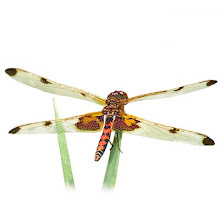Common Spragueia (Spragueia leo)
September 8, 2008
Have I just been overlooking these guys or is their population up this year? At any rate, I started taking insect photos in May 2003 and I saw one in August 2003 and then none until this year. I photographed one in captivity that had been collected at a mercury vapor light on August 15th, I saw one in Callaway County on September 6th but it flew off before I could take a photo, and then I saw a Common Spragueia nectaring at sedum today.
I'm glad I headed out for photographs, the forecast was for rain so I was working inside at the entomology museum. I noticed the sun was out and didn't want to waste a day at the end of the flight season, so I headed out. By the time I was out, it was cloudy and windy, but there were quite a few skippers feeding at the clump of sedum along with a Corn Earworm Moth (Helicoverpa zea). And then I noticed the Spragueia!
Pipevine Swallowtail (Battus philenor)
September 7, 2008
We have so many Pipevine Swallowtail caterpillars on our pipevines that we can hear them chewing the leaves when we walk by.
Cicada (Cicadidae)
September 6, 2008
We spent a cloudy morning at a central Missouri prairie, but didn't see much, I'm sure the weather didn't help. The highlight was finding a cicada being eaten by a praying mantis – unfortunately, it was an introduced species – a Chinese preying mantis. I didn't have a collecting permit for the area, otherwise I would have liked to have collected them – partly to be able to key out the cicada (hopefully I'll have an id to add to this page in a day or so) but mostly to kill an introduced species – even though that would obviously have no real effect on the population.
Pipevine Swallowtail (Battus philenor)
August 27, 2008
Lots of Pipevine Swallowtail caterpillars around this week. I slightly disturbed this one and it extruded its osmeterium – a defensive organ that expels chemicals to repel predators.
Pipevine caterpillars ingest plant chemicals that make them inedible to some predators, but they are still preyed upon by others, including ladybug larvae. Pipevines frequently defend themselves by biting the ladybugs, they are more likely to successfully defend themselves if they are bigger than the ladybugs. Caterpillars preparing to pupate are more likely to extrude their osmeterium than feeding caterpillars. Other defensive actions include thrashing around and regurgitating. (Stamp. 1986. Physical constraints of defense and response to invertebrate predators by pipevine caterpillars (Battus philenor: Papilionidae). Journal of the Lepidopterists' Society, 40: 191-205)
Monday, September 08, 2008
Subscribe to:
Comments (Atom)






